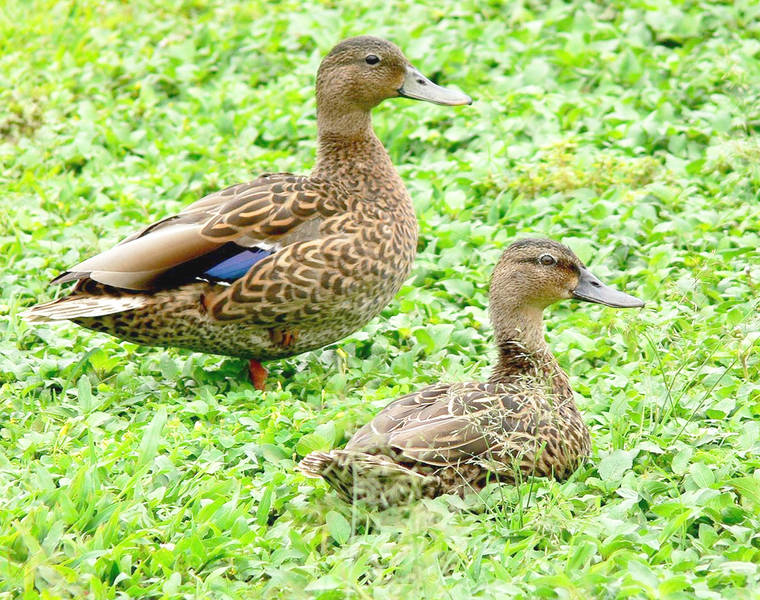KILAUEA — Strong wetland management on Kauai has led to a preserved population of pureblood Koloa maoli ducks, according to new research.
These little brown ducks are unique in that they only exist in Hawaii, but the ducks have been crossbreeding with introduced or feral mallard ducks, resulting in hybrids on Oahu, Maui, Molokai and Hawaii Island.
Kim Uyehara, a biologist who works with the ducks at the Kauai National Wildlife Refuge Complex, was worried the Koloa ducks on Kauai were starting to intermingle as well.
So she teamed up with Caitlin Wells, postdoctoral fellow and researcher at Colorado State University, to investigate. Recently, the duo published a study using two decades of research and detailing their findings — that the population is still pure.
“We were very relieved to learn there were very few hybrids on Kauai and the birds are still truly Koloa,” Uyehara said. “We actually have a big reservoir of Koloa DNA on Kauai, and so it gives us a lot of hope for the recovery of the endangered Koloa across Hawaii.”
Published Nov. 18 in the journal Molecular Ecology, the study has opened the door for new conservation techniques and involved a research team studying 425 individual Koloa, mallards and hybrid ducks from all over the archipelago.
The project also involved bird-banding and the collection of blood samples and analysis of birds that had recently died from avian botulism, a disease that’s a constant threat to the population.
In identifying the large population of pure Koloa maoli ducks, researchers said there was indication that the genetic diversity of Kauai Koloa may be rooted in an ancient origin of wetland birds on the island.
And the preservation of Kauai’s wetlands seems to have had a hand in keeping that population pure.
“We think that careful wetland management and protection on Kauai has maintained lots of good-quality habitat for Koloa, and supported a large population of the species,” Wells said.
“At the same time, feral mallards were removed from hotels on Kauai over a decade ago, and as far as we know no feral mallard populations are present on the island. When Koloa greatly outnumber feral mallards, male and female Koloa should be able to find mates of their own species, and there should be little or no hybridization,” said Wells.
Going forward, this study provides some backup for the need to preserve and manage safe wetland habitat for the Koloa maoli and the rest of Hawaii’s native birds in order to maintain that pure population on Kauai.
The point is to create a place where the birds can thrive safe from disease, feral mallards and predators like feral cats.
While Kauai has those wetlands, they’re not completely predator-proof, and aren’t disease-proof, either. Uyehara said there’s an outbreak of avian botulism at the Hanalei refuge that’s been ongoing since July.
She said they are working with “Friends of Hanalei” to make certified canine-handler teams a reality next year.
“This study was great news for Koloa conservation, but there are still a lot of threats that these ducks face,” Uyehara said.
•••
Jessica Else, environment reporter, can be reached at 245-0452 or jelse@thegardenisland.com.


